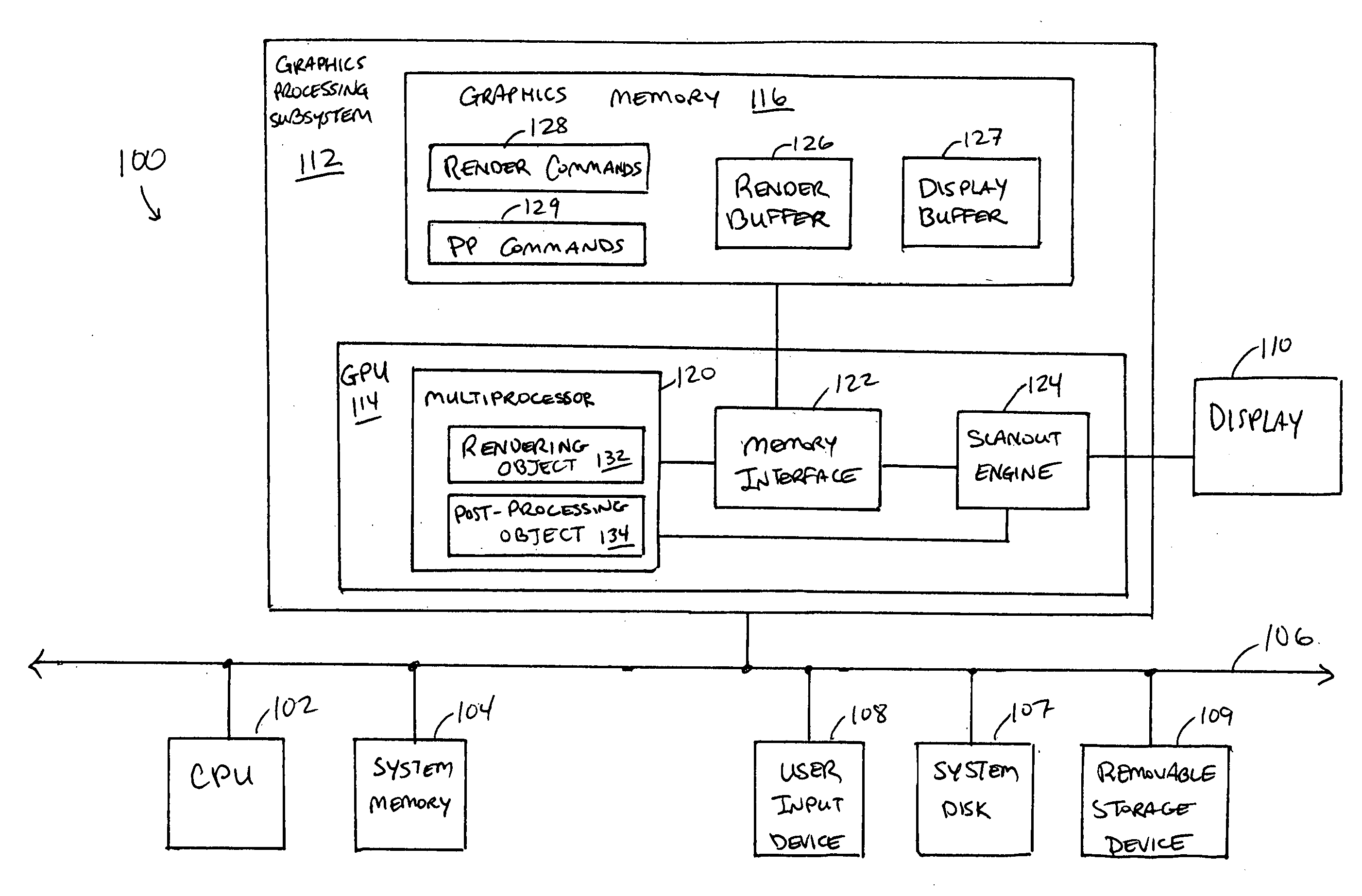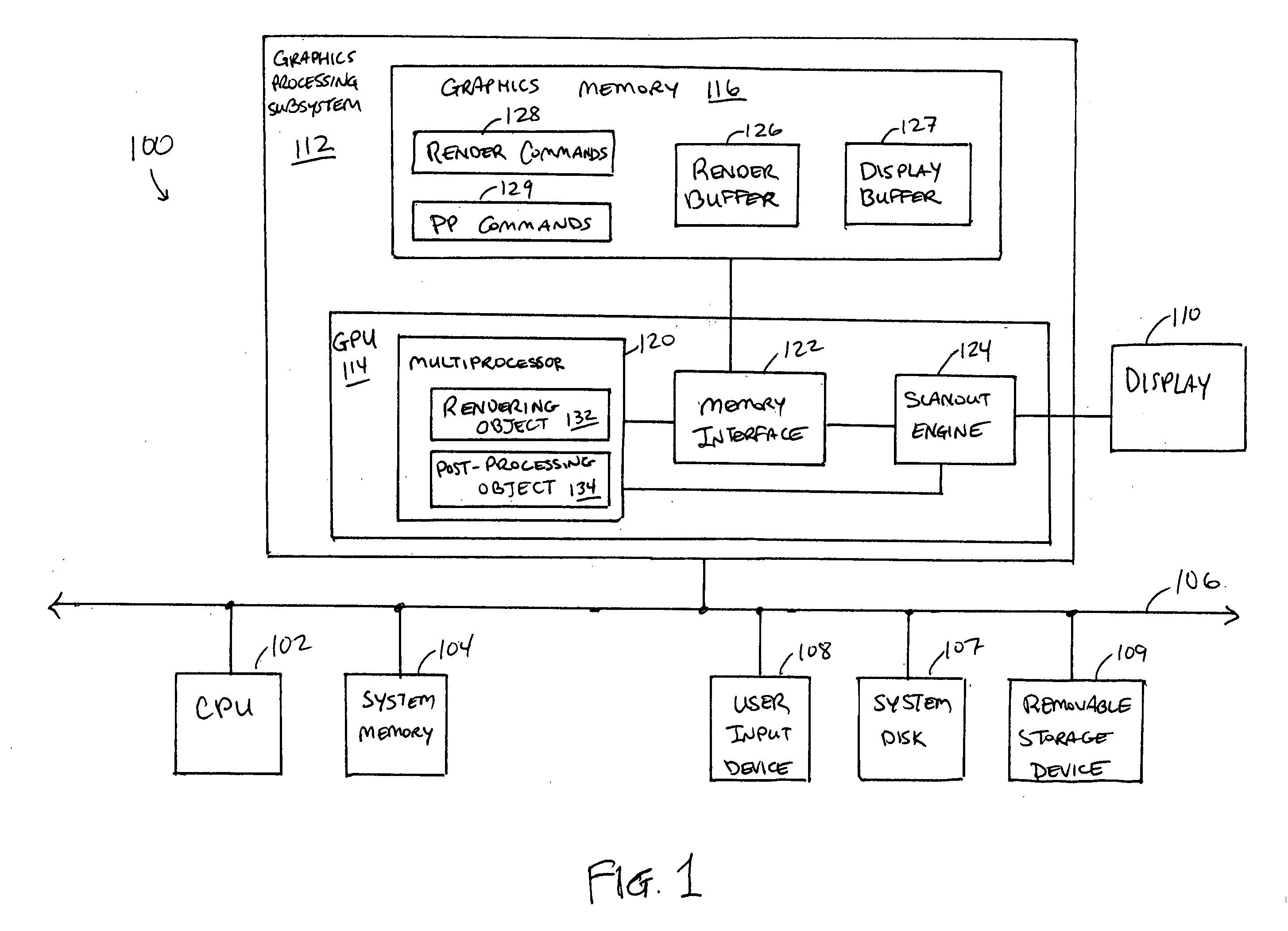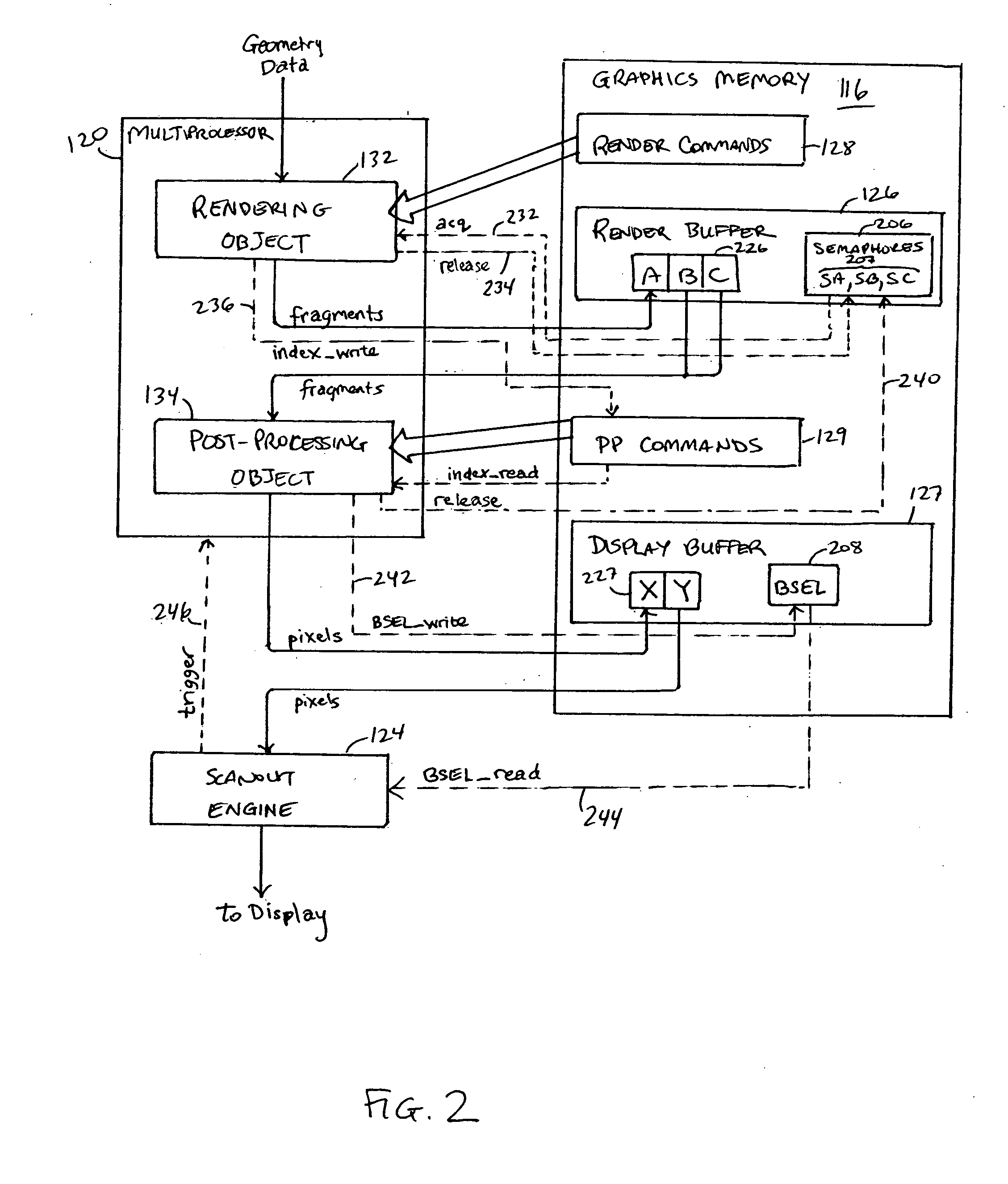Real-time display post-processing using programmable hardware
a post-processing and real-time display technology, applied in the field of graphics processors, can solve the problems of inability to add a new operation to the pipeline, unable to program, and usually limited processing capability of scanout engines
- Summary
- Abstract
- Description
- Claims
- Application Information
AI Technical Summary
Benefits of technology
Problems solved by technology
Method used
Image
Examples
Embodiment Construction
Overview and Terminology
[0029] Embodiments of the present invention provide graphics processors in which a rendering object and a post-processing object share access to a host processor with a programmable execution core. The rendering object, which operates at a rendering cadence, generates fragment data for an image from geometry data and writes the fragment data to an image buffer. The post-processing object, which operates at a scanout (display) cadence, generates pixel data from the fragment data in one or more completed image buffers and writes the pixel data to a frame buffer. In parallel, a scanout engine reads pixel data for a previously generated frame from a different frame buffer and supplies the pixels to a display device. Synchronously with the scanout operation, the scanout engine triggers the host processor to execute the post-processing object at the scanout cadence so that the next frame will be ready when the scanout engine finishes reading a current frame.
[003...
PUM
 Login to View More
Login to View More Abstract
Description
Claims
Application Information
 Login to View More
Login to View More - R&D
- Intellectual Property
- Life Sciences
- Materials
- Tech Scout
- Unparalleled Data Quality
- Higher Quality Content
- 60% Fewer Hallucinations
Browse by: Latest US Patents, China's latest patents, Technical Efficacy Thesaurus, Application Domain, Technology Topic, Popular Technical Reports.
© 2025 PatSnap. All rights reserved.Legal|Privacy policy|Modern Slavery Act Transparency Statement|Sitemap|About US| Contact US: help@patsnap.com



